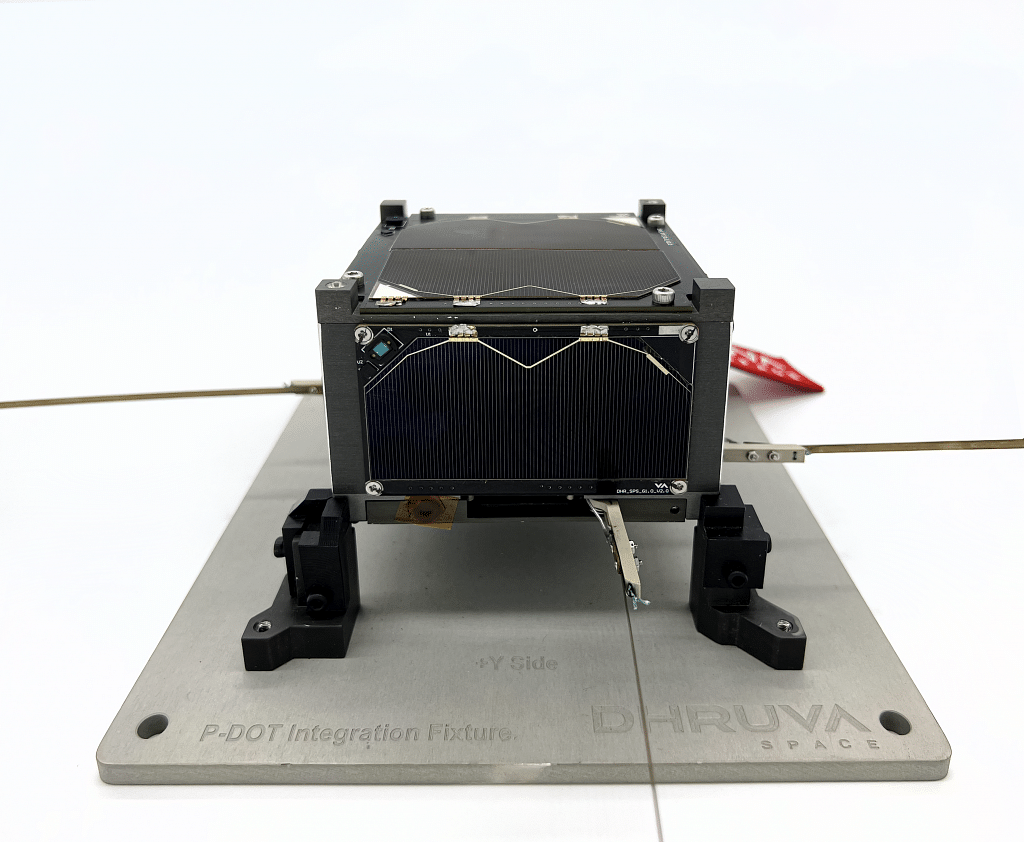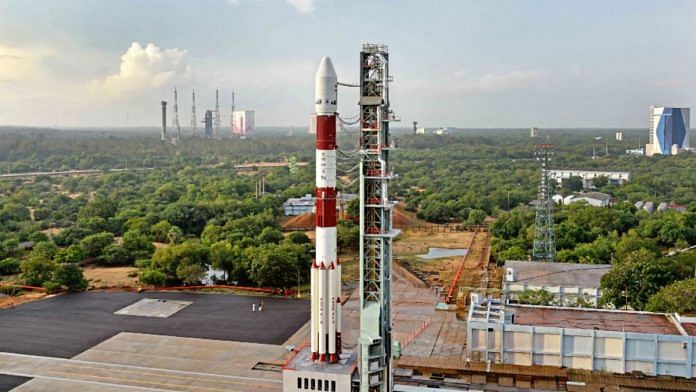Bengaluru: The Indian Space Research Organisation (ISRO) is set to launch its EOS-06 (earth observation satellite) along with eight other nanosatellite payloads, at 11.56 am Saturday on the (Polar Satellite Launch Vehicle) PSLV-C54 mission from the First Launch Pad in Sriharikota.
The mission will see the primary payload, the EOS-06, separating first, followed by a change in orbit, after which the smaller customer satellites will be deployed into a different sun synchronous polar orbit (SSPO). The mission will take 8,271.36 seconds (just over two hours) for completion.
Most of the customer satellites are the nano- and pico- satellites from private companies. The Anand nanosatellite belongs to Bengaluru-based firm Pixxel, two Thybolt picosatellites belong to Hyderabad-based Dhruva Space, and four Astrocast cubesats are from US-based Spaceflight.
Also riding with the satellites is ISRO’s INS-2B satellite for Bhutan.
In all, the payloads are earth observation satellite, Internet of Things (IoT) satellite, and the two Thybolt satellites that are India’s first homegrown amateur radio satellites to be launched by an Indian launch vehicle.
The EOS-06 satellite will separate at an altitude of 742.79 km, after 1,032.68 seconds into a SSPO, after which two orbit change manoeuvres will occur. Then the two Thybolts will separate 6,861.36 seconds at 516.39 km altitude, into another SSPO, followed by other customer satellites, and concluding with INS-2B at 7,521.36 seconds after launch.
The mission is the 56th flight of the PSLV and the 24th in its XL configuration with six strap-on boosters. It will launch with a lift off mass of 321 tonnes.
Also read: Ronna, quetta, ronto & quecto: As measurements get new prefixes, Earth now weighs 6 ronnagrams
EOS-06
This payload was developed to extend and continue the service provided by Oceansat-2, which entered into service in 2010. The OceanSat Scatterometer (OSCAT) instrument has been dysfunctional on Oceansat-2 since 2014. EOS-06 carries enhanced payloads with a wider application area.
The third-generation satellite holds four payloads — the Ocean Colour Monitor (OCM-3), the Sea Surface Temperature Monitor (SSTM), a Ku-Band Scatterometer (SCAT-3) for wind vector data and weather modelling, and an Argos-4 environment data collection instrument from the French space agency CNES (Centre national d’études spatiales) which will receive data from over 22,000 beacons deployed on the ground.
The mass of the EOS-06 satellite is 1,117 kg.
Picosatellites
The two Thybolt satellites from Dhruva Space are amateur (ham) radio satellites, intended to provide support to radio enthusiasts worldwide. They weigh slightly over 1.45 kilograms, and can be held in the palm of one’s hand. The mission is a technology demonstrator, and every step involved in the satellite’s separation was designed in-house by the team, including its post-deployment software.
The miniature satellites on this mission are supported by amateur radio clubs across the country, such as Star Fleet Amateur Radio Club, National Institute for Amateur Radio (NIAR), Indian Institute of Hams, Aniruddha’s Academy of Disaster Management, West Bengal Amateur Radio Club, Indian Academy of Communication and Disaster Management, and SSM College of Engineering.

Over 100 ham radio enthusiasts are expected to be present at Dhruva Space’s office for the launch and will test out the two satellites promptly after deployment.
“This is a way for us to give back to the ecosystem,” founder-CEO of Dhruva Space Sanjay Nekkanti told ThePrint, while speaking of the mission and his three co-founders, who came together a decade ago, bonded by their love for ham radio.
“We would really like more people to experience this hobby and pursue space technology. For us, this mission is very important,” Nekkanti added.
The team had designed and built everything associated with the launch by themselves including the satellite deployer and the software for de-tumbling the satellites after they are released, said Nekkanti. The satellites will deploy solar panels towards the sun and point their antennae towards the ground as programmed by the team.
Also read: 5-minute flight, 2 Indian & 1 foreign payloads — India launches first private rocket
Nanosatellites
With Anand, Pixxel would launch its third satellite and the first assembled one into space. After multiple delays, the hyperspectral microsatellite, weighing less than 15 kilograms, will finally enter orbit.
“It’s the first satellite the team ever built and got their hands dirty with,” said founder-CEO Awais Ahmed to ThePrint. “This satellite particularly has been through ups and downs. With the initial launch supposed to be in February 2021, which we had to back out of, to a delay of over 12 months to the next scheduled launch in October, it’s finally going up. The entire team will be at Sriharikota to witness the take off.”

Anand will view our planet through more than 150 wavelengths and will provide environmental data in great detail. Imagery from the satellite is expected to help map forest fires, identify soil stress, detect pest infestation in crops, monitor oil spills, and more.
“We are already working with many agriculture, mining, oil and gas companies for environmental and climate data such as methane and greenhouse gas detection, underground oil leak detection, mining contamination detection, carbon measurements, and so on,” said Ahmed.
The mission for Astrocast cubesats is to enable better IoT services so that very small assets, such as fishing buoys, individual animals, and remote machinery can be tracked efficiently. The four satellites, weighing 17.92 kg, will be a part of a constellation of 80 eventually, and these devices have low signal, small antenna and terminal, and a long battery life.
All payloads are expected to provide global coverage.
The India-Bhutan Sat or INS-2B is a satellite jointly developed by the UR Rao Space Center and Department of Information Technology and Telecom (DITT), Bhutan. It will have the NanoMx payload, a multispectral optical imager, and an ARPS-Digipeater (digital repeater).
Also read: Soon, 2 giant leaps for India Inc: The 1st private rocket launch, then a 3D printed rocket



